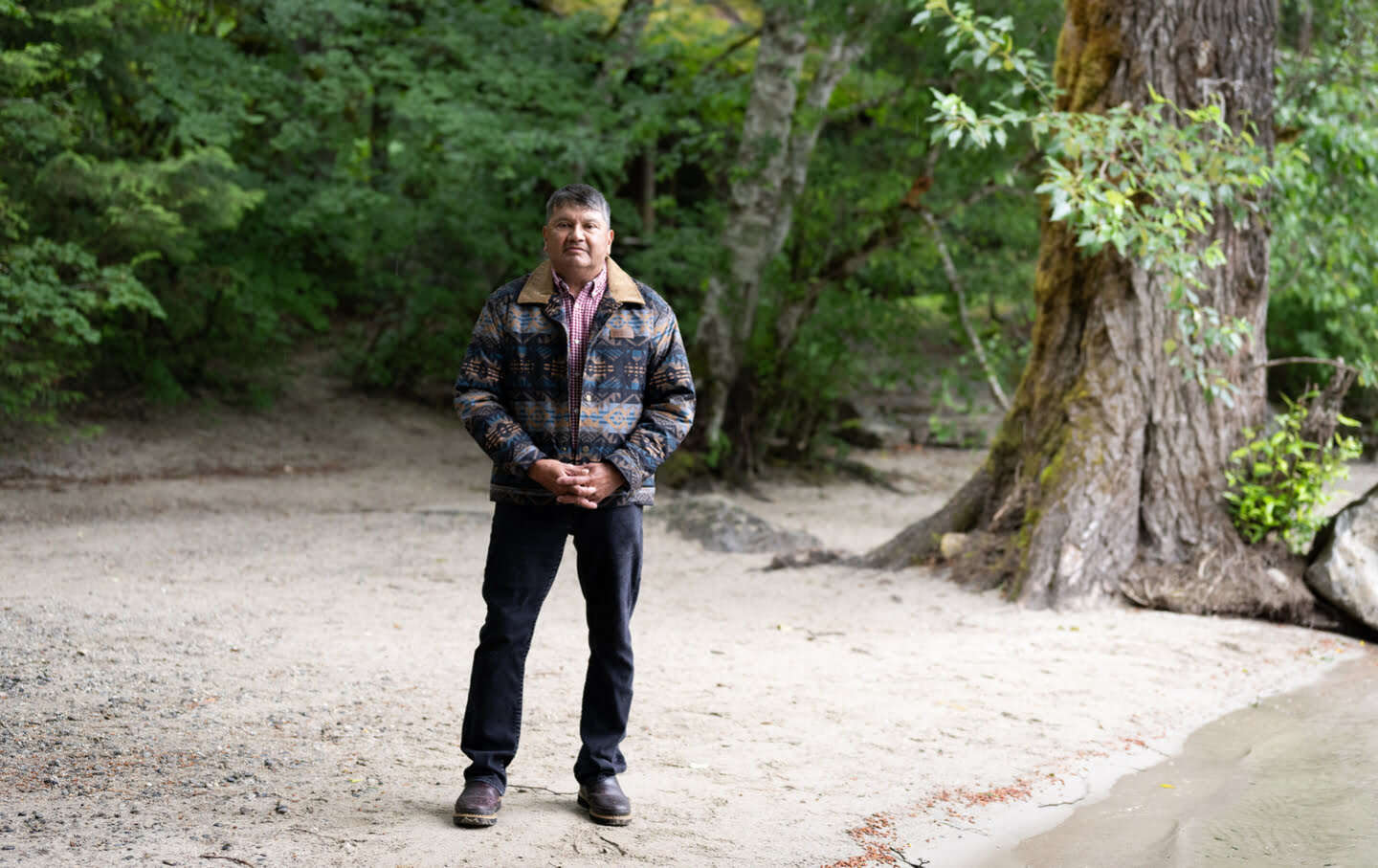
Environment
/
July 25, 2024
Newly discovered documents reveal how Seattle’s City government knowingly impacted an Indigenous Tribe’s treaty rights for over a century.
Above the Skagit River in Washington state, clouds flow through sheer granite peaks. The canyons below once resounded with the free-flowing power of a river that nourished and rejuvenated the ancestors of the Upper Skagit Indian Tribe along with the ecosystem they stewarded for millennia. It ran unobstructed from the Cascade Mountain Range into the Pacific Ocean. Now, the third largest river in the contiguous United States no longer runs freely.
Behind Gorge dam is Gorge “lake.” This man-made reservoir conceals the home site of the late Upper Skagit political and spiritual leader, Charley Moses. Seattle’s City Light Department (SCL) dammed the river and inundated the Upper Skagit’s spiritual area to build a cheap source of electricity to support an industrial economy. Salmon, steelhead, sea-run cutthroat trout, and bull trout, all known as anadromous fish, once migrated from the ocean to spawn here and further upstream. These fish formed the basis of the Upper Skagit Tribe’s culture and economy. Today, they’re blocked by a dry stretch of riverbed and three dams.
In 1855, the U.S. government signed a treaty with Tribes, including the Upper Skagit at Point Elliot. The government took the Tribe’s lands in exchange for basic rights, including the right to fish, hunt, and gather in their usual and accustomed areas. Decades later, however, the federal government failed the Tribe as its trustee by not acting on their behalf when SCL began constructing its dams in 1919. Upper Skagit tribal members weren’t considered U.S. citizens until 1924, and thus didn’t have legal standing to assert their cultural and treaty rights, David Hawkins, General Counsel for the Upper Skagit Indian Tribe, told Seattle City Council committee members in January 2023. SCL benefitted—and still benefits—from this historic injustice, according to Scott Schuyler, an Upper Skagit Tribal elder and the Tribe’s policy representative.
SCL is the public utility department of the City of Seattle, Washington. It owns and operates electric generation, transmission, and distribution facilities, delivering electricity to Seattle and other surrounding areas, where it has operated as a monopoly since 1951. SCL maintains a massive hydroelectric project consisting of three dams and electricity-generating facilities, three reservoirs, and miles of high voltage transmission lines.
Today, SCL is seeking to obtain a 50-year license to continue operating its dams on the Skagit River. It submitted its final application to the Federal Energy Regulatory Commission (FERC) in April 2023. SCL was then granted an additional year to complete studies necessary for FERC’s environmental review. In an effort to reach an agreement for SCL’s FERC license application, confidential negotiations continue between Native American Tribes, federal and state agencies, First Nations of Canada, and conservation groups. If an agreement is reached, it would be submitted to FERC, which would then determine whether to approve it as part of the licensing decision.
Scott Schuyler is part of a family that descended from Pat-teh-us who signed the 1855 treaty. He follows in his ancestor’s footsteps in defense of his Tribe’s treaty rights. When he was younger, he witnessed SCL’s decades-long dewatering of the Skagit River from between Gorge dam and Gorge powerhouse—known as the “bypass reach.” He was shocked and traumatized by the waterless riverbed. “I knew this was wrong,” he said. In that moment, he vowed to change it. “Ultimately, the Upper Skagit would like to see the sights and hear the sounds of a naturally flowing river—a return to the Indigenous landscape,” he added.
For over a century, evidence appears to show that SCL has misrepresented the environmental impacts of its dams in the historical and contemporary record and, therefore, has failed to adequately address those impacts. Evidence from contemporary science, historical documents, public records, presentations, and interviews, show that SCL may have been motivated by a desire to protect its hydroelectric assets and the benefits they provide. Doing so has allowed SCL to operate its hydroelectric project without sufficiently mitigating the environmental harm it causes.
Schuyler says, this lack of accountability has impacted the Upper Skagit’s treaty rights and culture. It is the U.S. government’s legal responsibility as the Tribe’s federal treaty trustee to ensure these rights are protected and can be exercised in the FERC licensing.
Janelle Schuyler (Hout-Suli-a), Scott Schuyler’s daughter and a member of the Upper Skagit Tribe, works for the Tribe, shadows her father, and hopes she can continue his work in the future. “Seattle City Light can make it right with its Tribal neighbors,” she said.
An SCL spokesperson stated that in the current licensing process, “[W]e have, and continue to, work closely with all our license partners to advance our shared commitment to the Skagit River watershed. With license partners and other stakeholders, we are working to balance needs that include flood risk management, park access, renewable power, and fish restoration and harvest.”
SCL has committed to providing fish passage, according to its spokesperson, but an agreement committing SCL to this has yet to be signed, according to Scott Schuyler.

Engineering An Alternate History
Through the 1970s and 1980s, treaty Tribes in Washington state became more powerful, particularly with the landmark 1974 case U.S. vs. Washington. This ruling affirmed the treaty-guaranteed fishing rights held by Tribes including the Upper Skagit. The Tribes and their federal trustees became an increasingly formidable adversary to environmental degradation, especially when it came to anadromous fish.
Early in 1986, the nearby Lower Elwha Klallam Tribe asserted the need for removal of two dams on the Elwha River to provide anadromous fish necessary access to dam-blocked habitat and restore access to their dam-inundated creation site. New federal laws also required FERC to give equal consideration to factors including wildlife and fish spawning grounds and habitat, not just to hydroelectricity production. Furthermore, legal decisions held that FERC had the authority to require dam owners to mitigate for the original impacts of their dams. That same year SCL’s 50-year license, first issued in 1927, had been expired for nine years and SCL was applying for a new one. The power of treaty Tribes and these new federal policies set the stage for the real possibility that SCL would be required to implement costly mitigation measures to obtain its new FERC license, including dam removal and fish passage.
In anticipation of these new requirements, SCL funded and oversaw the production of a report on the original impacts of its dams on fish and wildlife ahead of FERC’s environmental assessment. The Original Impacts Report process began with SCL leading the drafting of a scope of work. This scope of work included tasks to be carried out by SCL’s potential consultant informed by stakeholders, including federal and state agencies, Tribes, and non-governmental organizations.
Stakeholders expressed concern at the time. Dave Fluharty, then president of the North Cascades Conservation Council, was reported as saying in a meeting on the original draft of the scope of work, “The tone might discourage the consultant from assembling the best available information on fish.” Fluharty recently reflected on his comments: “We were properly suspicious of City Light, and we believed that they wanted to support a specific outcome.”
Others detailed this outcome. Jon Jarvis, former National Park Service director and then North Cascades National Park superintendent, recently confirmed his belief that SCL was working toward a pre-determined conclusion that anadromous fish were historically blocked by natural barriers prior to the dam’s construction: “Certainly, I felt that in terms of fish getting beyond Gorge—yeah—they were pretty dug in on that.”
Once the stakeholders all agreed on a version of the scope of work, SCL created its own version. SCL’s version reframed the description of the task, from one confirming the potential for historical anadromous fish passage to one questioning whether or not anadromous fish passage was ever possible—a consequential change that stakeholders, including federal agencies and the Upper Skagit Tribe, were not informed of until it was recently revealed to them by The Margin.
Their scope of work also contained the precise language of what appeared to be a predetermined conclusion: the consultant “shall include a hydrologic evaluation… of the perceived velocity barriers at Gorge and Diablo Canyons.”
When recently informed by The Margin of this addition, Jarvis said, “perceived velocity barriers” weren’t discussed by stakeholders as being relevant for the scope of work for the report. “Clearly that’s a deviation from the scope of work,” he said. Jarvis said it sounded like SCL was looking to prove the theory they already had, “which is that the [river’s] velocity was too intense for fish to make it upstream.” Steve Fransen, a former fisheries biologist for the National Marine Fisheries Service and the U.S. Fish and Wildlife Service who then worked for the organization representing the Skagit River treaty Tribes, agreed saying, “The impression was that there were no waterfalls that were barriers, so that any barrier would likely have had to have been a velocity barrier.”
These efforts created the false impression that the Original Impacts Report would be developed using the scope of work agreed to by the stakeholders in providing an accurate account of the original impacts of SCL’s dams. Consequently, SCL avoided mitigation for the impacts of its dams on the river, on anadromous fish, and on the Upper Skagit Tribe for another generation by concluding that significant numbers of anadromous fish were previously blocked by velocity barriers, not by the dams. SCL didn’t directly respond to numerous questions from The Margin regarding its representation of the historical record.
“It doesn’t smell just right”
When SCL first started constructing its dams in 1919, anadromous fish and their habitat were suffering tremendously. Researchers warned salmon were nearing extinction. They found that the decades of overfishing by the commercial fishing industry drastically hastened their decline, in addition to what the chairman of the Washington state fisheries board blamed – the hydroelectric dams. At a June 20, 1921 state fisheries board hearing, one Stanford University fisheries researcher compared the state of anadromous fish populations to someone on their deathbed.
Several newspapers in 1920 and 1921 reported on SCL’s new hydroelectric project, specifically, that its dams would block the migration of anadromous fish. Given that fact, the reports stated, SCL was required by state law, and the federal agencies deferring to it, to build fish passage through its dams. These dams, however, were considered too tall for fish passage technology at the time, so the state of Washington created an exemption in the form of a fish hatchery. SCL preferred this exemption but would need the permission of the Washington state fisheries department, the precursor to the Washington Department of Fish and Wildlife (WDFW), to obtain it.
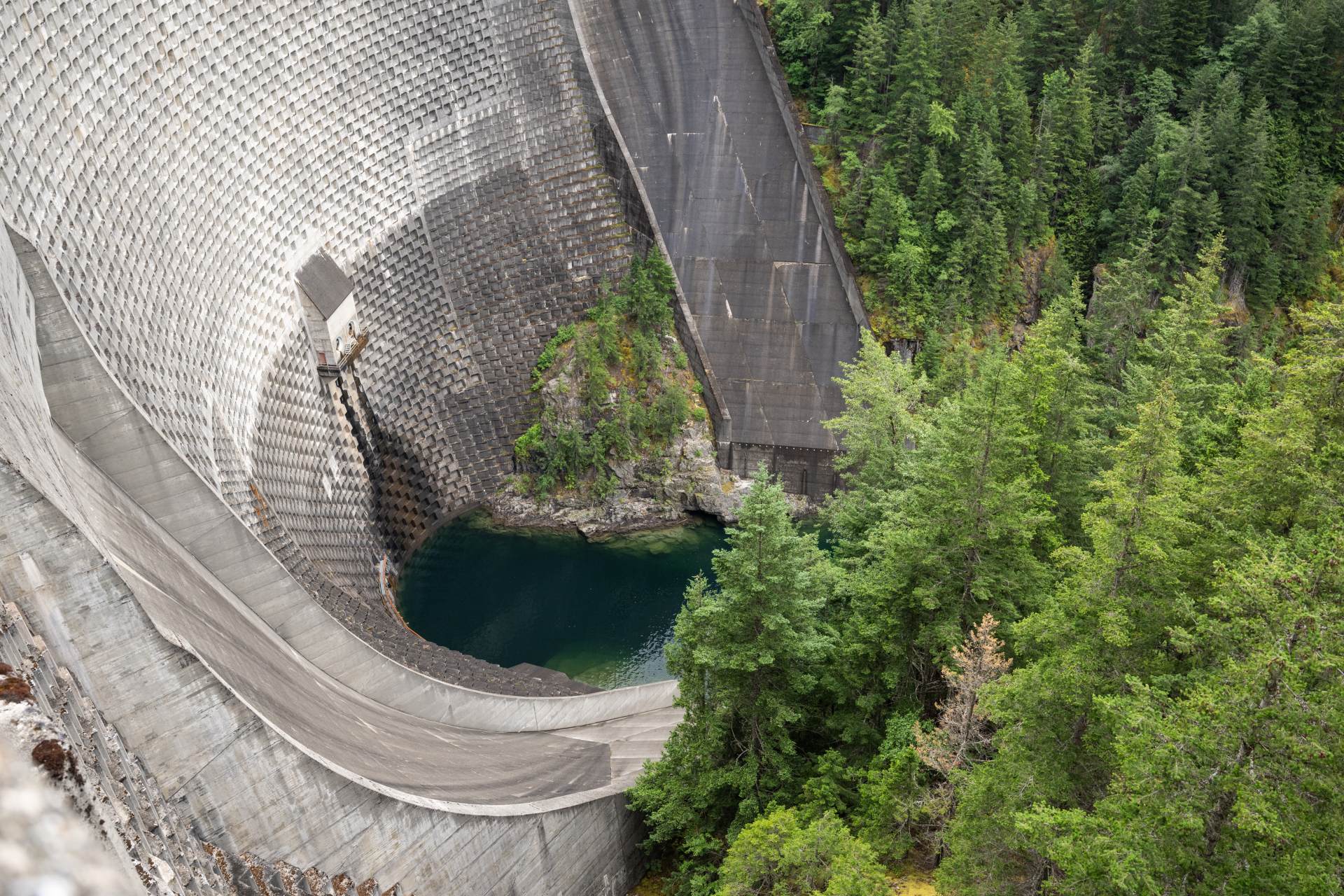
An unsigned agreement prepared by the state’s Attorney General in April 1921 reveals that SCL applied for a permit to construct two dams on the Skagit River, “one a short distance below the mouth of Gorge Creek [the lowermost Gorge dam] and one a short distance below the mouth of Ruby Creek [the uppermost Ross dam]… of such height that it will be impracticable to construct fish ladders or fishways thereover.” By law, the state fisheries department wasn’t allowed to issue a permit for a dam until either fish passage was built or a hatchery was constructed. Nonetheless, SCL proceeded to construct its dams without fish passage or a hatchery, and without the necessary permit from the state supervisor of fisheries. The federal government also had the authority to require fish passage, but only if doing so harmonized with state law, but it didn’t do anything to hold SCL accountable either.
An April 6, 1921 letter obtained from SCL’s library clearly shows that SCL knew the requirements under law: “In connection with the Skagit River Development, we must either supply a fishway over our dams or construct a fish hatchery for the State of Washington. We would much prefer to construct the hatchery in lieu of the fishway.”
By acknowledging, in the 1921 letter, the need to address this requirement to provide fish passage through all its dams, or provide for a hatchery instead, SCL appeared to acknowledge that it knew its dams would block anadromous fish—since 1920.
Six years later, in 1926, SCL’s superintendent J.D. Ross wrote to the state fisheries department, “Another thing it might be well to study is the statement that no salmon ever get up to Diablo. Perhaps the present weir is at fault. If so, we should also consider some form of ladder at the present weir” (the ‘weir’ referred to was Gorge dam.) Ross also asked for advice on fish ladder technology to help anadromous fish over the proposed Diablo Dam. Again, neither fish passage, nor a fish hatchery in its place, were constructed. Still, SCL was granted a federal permit to construct Diablo Dam, regardless of the law.
Finally, a state official attempted to hold SCL accountable eight years later. Washington state fisheries supervisor B.M. Brennan determined SCL had evaded its fish passage requirements in a 1934 letter to the Governor’s Secretary: “After doing some investigating, I find that at one time a contract was drawn up between the Department of Fisheries and the City of Seattle but was never entered into or signed. It doesn’t smell just right. I think that we are still in a position to force the City of Seattle to build and maintain this.” In other letters Brennan wrote, he grouped SCL with federal and municipal agencies that “have not only failed in many instances to give fish life its proper protection but have ignored the demand of the department for such protection work.” Brennan also possessed evidence of steelhead—an anadromous fish—being caught above Diablo Canyon, which, SCL has claimed since approximately 1936, is improbable under its theory that it was an impenetrable “velocity barrier.”
With his evidence, legal requirements, and the support of federal agencies, Brennan forced SCL to comply with state law, but instead of agreeing to provide fish passage, SCL agreed to provide for a fish hatchery—in line with its intent from 1921—as well as minimum flows to be released from Gorge Dam into the bypass reach. The agreement between SCL and the state was finally signed on May 1, 1947, 27 years after SCL blocked anadromous fish with Gorge Dam. According to the agreement, SCL “constructed three dams on the main Skagit River above Newhalem, Washington, for the production of electric energy, and the construction of said dams and the artificial fluctuation in the flow of the Skagit River caused by the operation thereof has resulted in destruction or damage to salmon, steelhead and cut-throat trout owned by the State.”
As far as the state fisheries department and federal agencies were concerned, the requirements placed on SCL in the agreement compensated for these damages. Even so, the 1947 Agreement allowed for either party to review or change it with the approval of the Federal Power Commission, FERC’s predecessor. The authority to require fish passage now fully resides with the federal agencies, while the matter of flows in the bypass reach rests with the Washington state Department of Ecology. WDFW didn’t respond to comment regarding whether or not SCL has complied with the terms of this agreement. Furthermore, there is no mention in the historical record of consultation with the Upper Skagit Tribe.
Even as SCL’s final 1988 Original Impacts Report emphasized supposed barriers in the bypass reach, it concluded that small numbers of anadromous fish were “probably” blocked by Gorge Dam when it was constructed, while most were “discouraged” by “falls and rapids” a.k.a. ‘velocity barriers’ in the bypass reach and Diablo canyon, the current site of Diablo Dam.
While these documents detail the history of SCL’s fish passage and flow requirements, the news reports, laws, letters, and agreements that were omitted from SCL’s 1988 Original Impacts Report reveal how SCL failed to include or acknowledge in this report the fact that it had previously signed an agreement taking responsibility for the blocking of anadromous fish and evaded its requirement under law to provide fish passage or a hatchery and flows from Gorge Dam until 1947. These key omissions also raise questions as to whether SCL did not reference these documents in its 1988 report in order to avoid being responsible for costly mitigation. When informed that SCL had produced such a report, Jarvis said “That doesn’t surprise me that there were omissions.”
FERC didn’t respond to specific questions regarding The Margin’s findings, including questions regarding the potential impact they may have on SCL’s license.
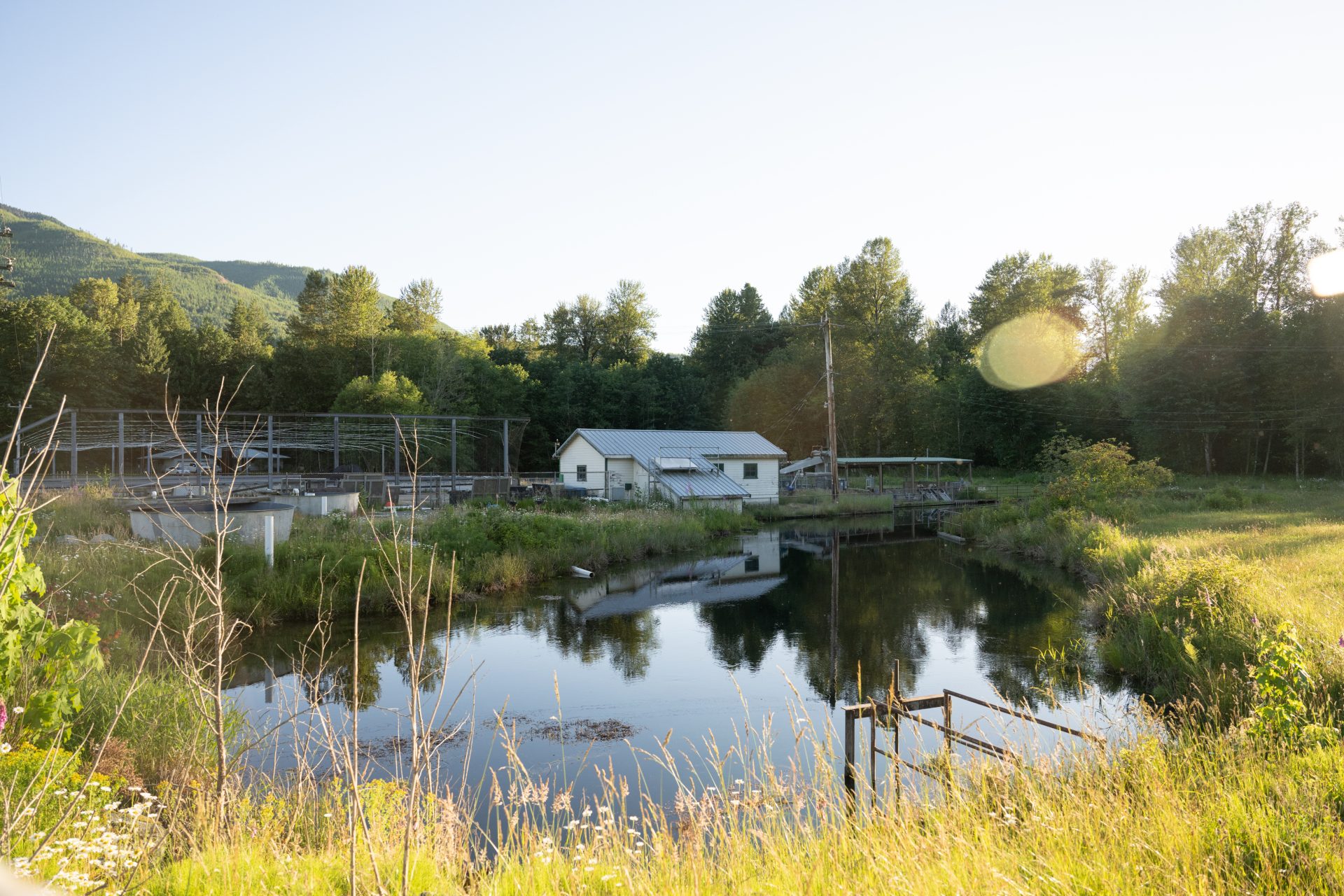
Falsehoods Become Accepted Truths
In the decades following, the 1988 Original Impacts Report and its theories and interpretations have been used and referenced by state and federal government agencies, and non-profit organizations several times to SCL’s advantage. The dissemination of SCL’s conclusions have formed a set of references it has then cited in order to continue avoiding costly environmental mitigation requirements.
The story of one primary example begins in 1986, when SCL requested that the Washington Department of Ecology (which holds permitting authority under the Clean Water Act on whether to provide or withhold water in the bypass reach) give feedback on the development of the Original Impacts Report, sending it the first version of the scope of work. In this version, SCL stated: “anadromous fish use is not expected to be a major issue, as initial historic and physiographic information suggests that the affected stretch of river was largely inaccessible to migrating salmonids prior to the dams.” SCL needed Ecology’s permit in order to receive its FERC license. The department of Ecology didn’t comment or attend a meeting regarding the scope of work. Its inaction became its consent.
In February 1989, SCL told FERC staff that anadromous fish didn’t use the bypass reach prior to SCL’s dams based on its Original Impacts Report. Then, in 1991, Ecology waived its Clean Water Act permitting authority, allowing SCL to dewater the bypass reach. FERC later cited the Original Impacts Report and Ecology’s waiver in the environmental analysis of SCL’s license application. The license FERC ultimately granted to SCL in 1995 allowed it to dewater the bypass reach by releasing water from Gorge powerhouse and not Gorge dam, thus legitimizing the conclusions SCL reached in its Original Impacts Report. This 1995 license will expire in 2025, and again, SCL will need Ecology’s permission to receive it. FERC will also begin conducting an environmental review of SCL’s license application at the end of this year.
SCL didn’t respond to specific, in-depth questions regarding the findings of this report, but an SCL spokesperson instead stated that, with regard to historical documents, “[W]e can only refer to the historical record as it stands today, in the documents that have already been made available.” SCL did not truly grapple with any of the questions asked by The Margin about the historical record.
When recently informed of these findings by The Margin, Scott Schuyler said he felt his own perception vindicated and redeemed. “Back when I was young, and I knew this was wrong, apparently it was actually wrong,” he said. He shared that his fellow tribal members have expressed feelings of anguish, pain, trauma, and despair when witnessing SCL’s dewatering of the bypass reach. These same feelings have accompanied the decline of anadromous fish and the subsequent impact on Upper Skagit Tribal culture, he said. “The only way to definitively put the issue to rest is through dam removal,” he stated.
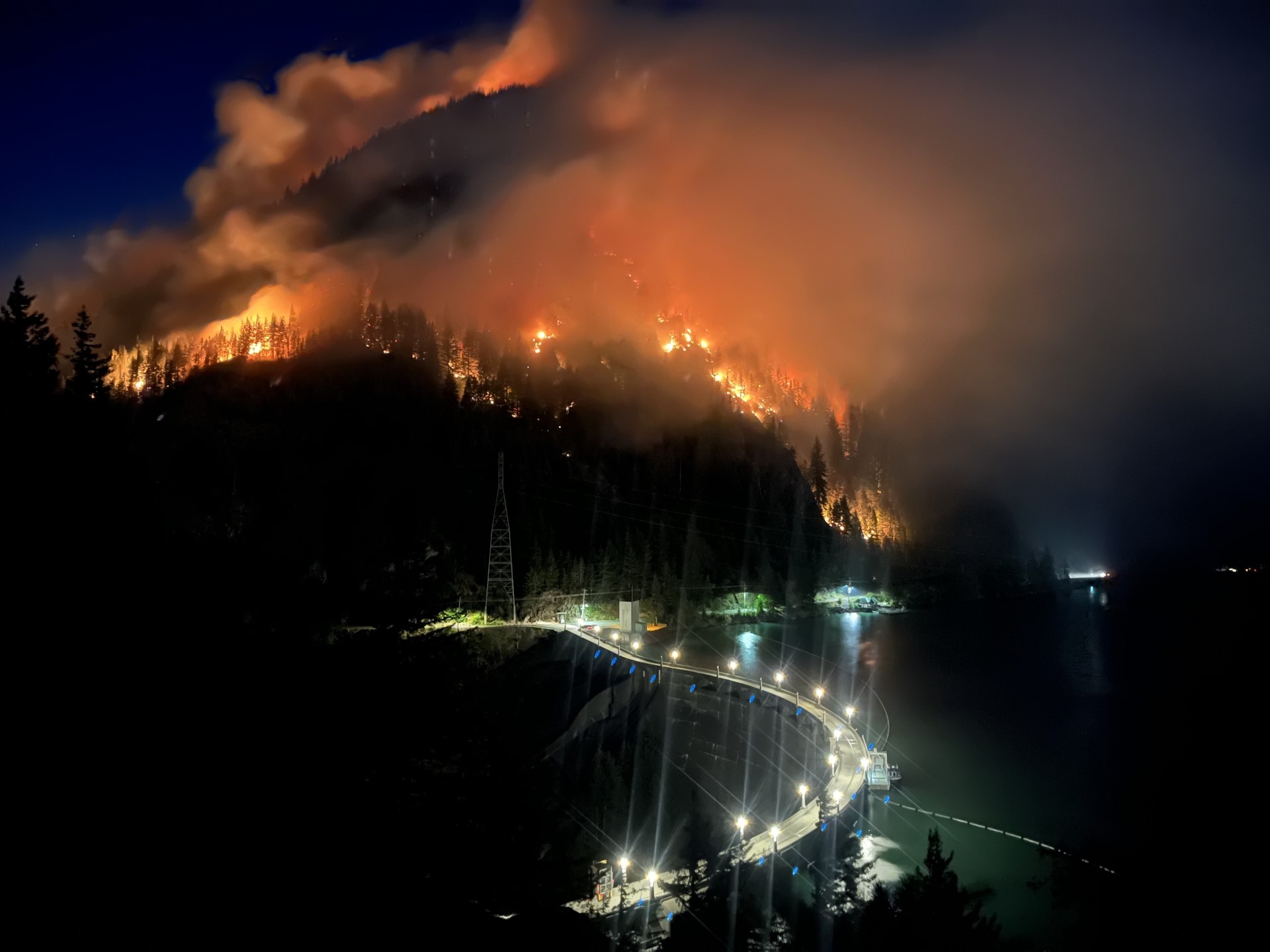
A Call for Dam Removal
In 2019 the Upper Skagit Tribe requested that SCL remove Gorge dam via a letter to the Seattle Mayor, public petitions, in extensive news coverage, and to FERC as part of SCL’s license application process. Even though FERC didn’t require SCL to study the ecological and socioeconomic effects of removing Gorge Dam, SCL announced plans to conduct a Project Decommissioning Assessment of its own in early August 2021. As reported previously in The Margin, the assessment SCL chose didn’t actually study the removal of Gorge dam but rather whether or not to study the removal of Gorge dam or the entire hydroelectric project. It was a sleight-of-hand that made it seem to stakeholders, the public, and policymakers as if SCL was responding to the Upper Skagit’s request, when in fact this was not addressing the intent of the request, according to Scott Schuyler.
A month before SCL announced its plan to conduct the Project Decommissioning Assessment, a FERC commissioner took a private Skagit tour with SCL, according to emails obtained via open records law. In the emails, an SCL official wrote that it considered the tour “off the record.” According to a FERC spokesperson, “In a contested Commission proceeding (one in which an intervenor disputes a material issue) no one may have off-the-record communications about the merits of a proceeding with a Commission employee who is reasonably likely to be involved in the decisional process. Procedural inquiries are okay.” SCL stated in an email obtained by open records law its staff would be available to answer questions on the FERC licensing. An SCL employee wrote to FERC, “I have to ask – will there be a formal letter or report resulting from this tour of the Skagit Project?” Neither SCL nor FERC made any filing of the commissioner’s Skagit tour days before FERC denied the Upper Skagit Tribe’s Gorge dam removal study request.
SCL didn’t respond to questions regarding its tour for the FERC commissioner.
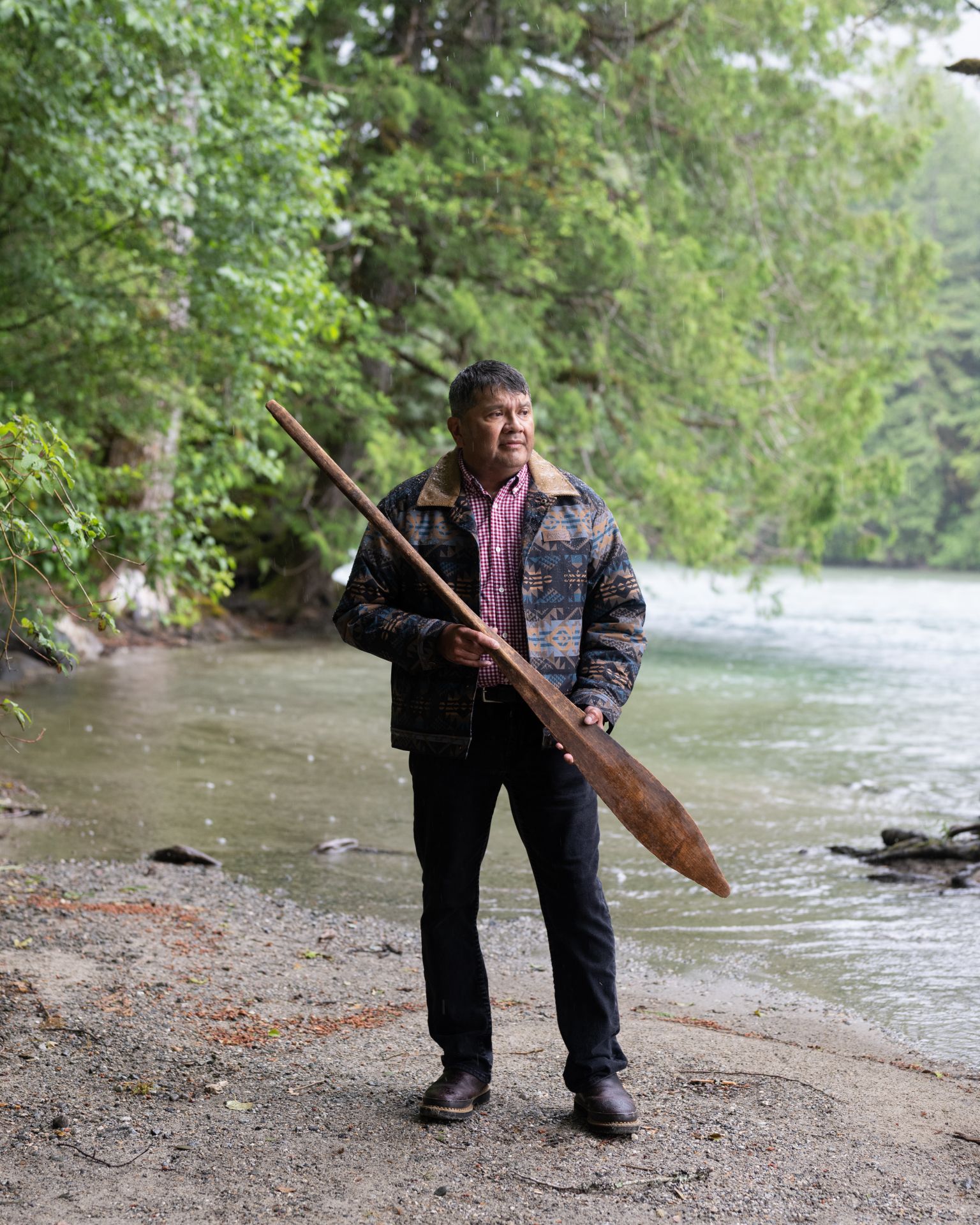
Scott Schuyler said he wasn’t aware of the FERC commissioner reaching out to the Upper Skagit Tribe. “That’s definitely disappointing one of the federal agencies that has trust responsibilities to the Tribe didn’t reach out,” he said.
The Project Decommissioning Assessment framework SCL chose was developed by FERC to guide FERC in determining whether to include a dam removal alternative in the environmental analysis phase of hydropower license proceedings. Similar to the 1988 Original Impacts Report, by anticipating FERC’s potential environmental mitigation requirements, SCL attempted to pre-empt FERC in determining whether or not a dam removal alternative will be required when FERC initiates the environmental analysis phase. SCL filed the Project Decommissioning Assessment with its Final License Application in April 2023.
Two months before SCL filed its Project Decommissioning Assessment, the Upper Skagit Tribe criticized SCL for ignoring its environmental justice impacts in a filing to FERC: “The Tribe has lost a spiritual center (it’s flooded by parts of 3 reservoirs) and its spiritual practitioners are denied access to its associated [Traditional Cultural Properties] resources underwater, an adverse impact disproportionate to any other group.”
Furthermore, the assessment framework failed to factor for these same environmental justice impacts, which were the central reason SCL agreed to conduct its assessment in the first place. Notably, SCL failed to mention its assessment came as a result of the Upper Skagit Tribe’s efforts.
SCL didn’t respond to a specific question regarding why it chose a project decommissioning framework that didn’t factor for environmental justice, when the Upper Skagit Tribe have expressed experiencing significant environmental justice impacts as a result of SCL’s dams.
When SCL announced its plan to conduct the Project Decommissioning Assessment to Governor Jay Inslee’s office on August 5th, 2021, SCL asserted “Gorge Dam and the entire Skagit Hydroelectric Project are a vital component of our strategy toward a clean, carbon-free energy future.” The following day, one of the Governor’s staff members pointed out the assessment framework didn’t factor for environmental justice, according to an email obtained by open records law.
A separate staffer in the Governor’s office, however, didn’t note the assessment framework didn’t factor for environmental justice, and instead sent a response to SCL “I’m glad to learn that SCL is meaningfully engaging with stakeholders and undertaking a decommissioning assessment.” A week earlier, this same staffer took a tour of the Skagit dam project led by SCL, writing in an email afterwards to an SCL lobbyist obtained by open records law: “Thank you SO much for including me in yesterday’s tour. It was beyond anything I had imagined. I learned so much and really appreciated getting to hear first-hand the work you all are doing with surrounding Tribes, communities, the national park, NCI, etc. It’s really incredible to witness.” Again, Scott Schuyler didn’t recall the Upper Skagit being included in or consulted regarding this tour.
A spokesperson from Governor Jay Inslee’s office didn’t directly respond to questions from The Margin regarding the fact that the assessment SCL chose didn’t factor for environmental justice. The Governor’s office hasn’t taken a position on the relicensing of SCL’s dams on the Skagit River, according to the spokesperson, but the spokesperson noted that “[g]enerally speaking, the governor strongly supports salmon restoration efforts, including adding fish passage to existing dams where feasible and ecologically beneficial.”
SCL filed its final Project Decommissioning Assessment with FERC in April 2023, concluding: “[SCL] is not planning to decommission any of the three Project developments at this time.” It reasserted, “There is no evidence to date that suggests that Chinook salmon or steelhead were ever able to move upstream of the current site of Diablo Dam, where the river is confined to a bedrock canyon that is only about 10 feet wide.” It continued, “velocity barriers in the gorge reach are thought to have historically restricted further upstream movement of fish in the Skagit River.”
With this, SCL again justified its dewatering of the Gorge bypass reach. In this context, SCL stated that removing the entire project wouldn’t open up more habitat for anadromous fish “because of existing natural barriers in the canyon near the current site of Diablo dam.” SCL did, however, acknowledge the electricity produced by the entire project could be replaced with solar- and wind-generated electricity.
SCL didn’t respond to detailed questions regarding its dam decommissioning assessment.
Currently, the Secretary of the U.S. Interior Department and the Secretary of the U.S. Commerce Department can require SCL to construct fish passage structures through its dams as federal requirements pre-empt state requirements under the Federal Power Act. NPS, the U.S. Fish and Wildlife Service, and the National Marine Fisheries Service are all divisions of either the Interior or Commerce departments participating in the FERC licensing. For its part, the Washington Department of Fish and Wildlife requested that SCL study fish passage through all three dams in its filings with FERC.
After decades of pressure, SCL is currently considering fish passage through all its dams. It’s also pursuing other mitigation. For its 1995 license, FERC required SCL to provide mitigation measures including flows from Gorge powerhouse and by purchasing land for fish and wildlife habitat in compensation for the portion of the fish and wildlife habitat it inundated with its dams.
An SCL spokesperson responded in an e-mail: “Historic records about anadromous fish are required to be included in FERC filings, as they were used by previous generations’ decision-making. In 1995, settlement parties prioritized other mitigation strategies; for this license, Seattle City Light is committed to fish passage. The current license application explicitly includes a fish passage program, and Tribes and conditioning federal agencies have clear and strong roles to play in the research, design and implementation of the program.”
Today SCL is pursuing land acquisition in the Skagit River estuary where it faces opposition from Skagit County officials. Although the County agrees this habitat should be improved, it bears the burden of the success or failure of such habitat restoration projects, according to Will Honea, Skagit County deputy prosecuting attorney. “This is a long-range effort that must center Skagit local government and Skagit Tribes,” he said. Honea said Skagit County has been undermined in this effort by SCL. In his opinion, “SCL has done everything possible to foment conflict and prevent Skagit local government from coming together with Tribes to figure out the Skagit estuary.” Honea thinks SCL has been doing this to get out of providing fish passage. SCL didn’t reply to Honea’s comments.
“SCL to date has failed to provide fish passage over its dams to repair the harm of blocking and compartmentalizing our namesake river,” according to Scott Schuyler. Meanwhile, SCL and those it supports have reaped the benefits of the Skagit River’s power, while the Upper Skagit Tribe and the anadromous fish sustained by the river since time immemorial have been deprived of it. “In the past, they never really cared for Indigenous wants or needs,” said Janelle Schuyler.
A few years ago, Janelle recounted an epiphany she had when she was fishing with her father, Scott Schuyler. “I know that the dams are coming down in my lifetime,” she said then, and smiled as she looked into the distance and imagined the party or ceremony that will take place and the relief it will bring. “I still feel the same about dam removals as I did a few years ago,” she recently said. Her epiphany still inspires her to follow in her father’s footsteps, learning to embody his. “I think the welfare of salmon is interconnected, not only with our Tribe, but every single one of us and our environment around us—down to the soil we walk on, to the trees that we see on the horizon,” Janelle concluded.
Scott Schuyler added, “The Upper Skagit Tribe wants the river restored to the Indigenous landscape, and until dams are removed, the issue will be out there.”
This story was published in partnership with The Margin, a platform focused exclusively on telling stories about environmental justice.
Thank you for reading The Nation
We hope you enjoyed the story you just read, just one of the many incisive, deeply-reported articles we publish daily. Now more than ever, we need fearless journalism that shifts the needle on important issues, uncovers malfeasance and corruption, and uplifts voices and perspectives that often go unheard in mainstream media.
Throughout this critical election year and a time of media austerity and renewed campus activism and rising labor organizing, independent journalism that gets to the heart of the matter is more critical than ever before. Donate right now and help us hold the powerful accountable, shine a light on issues that would otherwise be swept under the rug, and build a more just and equitable future.
For nearly 160 years, The Nation has stood for truth, justice, and moral clarity. As a reader-supported publication, we are not beholden to the whims of advertisers or a corporate owner. But it does take financial resources to report on stories that may take weeks or months to properly investigate, thoroughly edit and fact-check articles, and get our stories into the hands of readers.
Donate today and stand with us for a better future. Thank you for being a supporter of independent journalism.